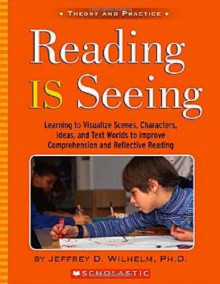In Reading IS Seeing, Jeffrey Wilhelm shares well over 100 visualization strategies that build reading skills and make reading, discussing, and reflecting on texts more engaging and relevant. These techniques can be adapted to use with virtually any kind of text , including, fiction, nonfiction,...
show more
In Reading IS Seeing, Jeffrey Wilhelm shares well over 100 visualization strategies that build reading skills and make reading, discussing, and reflecting on texts more engaging and relevant. These techniques can be adapted to use with virtually any kind of text , including, fiction, nonfiction, poetry, picture books. Idea tableau, mirror mapping, illustrated journals, picture maps, character symbol maps, and quote books are just a few of the many motivating strategies. Wilhelm gives the strategies moorings in theory and current research, so teachers know exactly how to incorporate them into the "big picture" of their teaching goals. He champions a learning-centered approach, in which teachers continually model and guide students toward "the next accessible reading challenge." Furthermore, he includes explicit teaching sequences, many samples of students’ visualization projects, and examples of strategies in action using specific books. The strategies in this book will help students to: • activate and build background knowledge • elaborate textual details about settings, scenes, actions, and characters • make inferences about characters, settings, ideas, and themes • identify important details and stitch these together to state a text's main idea • develop mental models to comprehend non fiction
show less

